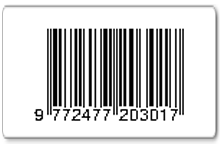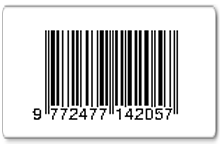The Development of Grade 10 Students' Mental Models on Solutions Through Model-Centered Instruction
Abstract
This study aimed to construct the mental models of students in the 10th grade in order to attain a higher level of mental models by adopting a model-centered education sequence. This might be accomplished by adopting a model-centered instruction sequence. The research group consisted of 33 students who were all in the tenth grade at one school in the Mahasarakham province of Thailand during the second semester of the academic year 2021. The following instruments were utilized in the course of this research: 1) six different lesson plans, each with its own set of answers, that utilize a model-centered instructional technique, 2) mental model test, 3) students’ notebook, and 4) teacher’s note. Statistics such as the percentage, the mean, and standard deviation were applied in the process of doing the data analysis. The result revealed that the majority of students have accurate mental representations of scientific models, the adoption of a model-centered education sequence can help students gain more achievement. When it comes to accurately preparing diluted solutions, boiling points of solutions, and freezing points of solutions, the proportions of accurate mental models were 45.5, 51.5, and 48.4 respectively. It has been shown that the percentages of individuals who have entirely incorrect mental models, flawed mental models, incoherent mental models, and those who have no reaction are all on the decline.
Keywords
Full Text:
PDFReferences
Baek H, Schwarz C, Chen J, Hokayem H, & Zhan L 2011. Engaging elementary students in scientific modeling: The MoDeLS fifth-grade approach and findings. Models and Modeling: Cognitive Tools for Scientific Enquiry, pp. 195-218.
Barlow AT, Frick TM, Barker HL, & Phelps AJ 2014. Modeling instruction: The impact of professional development on instructional practices. Science Educator, vol. 23, no. 1, pp. 14-26.
Batlolona JR, & Souisa HF 2020. Problem based learning: students' mental models on water conductivity concept. International Journal of Evaluation and Research in Education, vol. 9, no. 2, pp. 269-277.
Baumfalk B, Bhattacharya D, Vo T, Forbes C, Zangori L, & Schwarz C 2019. Impact of model‐based science curriculum and instruction on elementary students' explanations for the hydrosphere. Journal of Research in Science Teaching, vol. 56, no. 5, pp. 570-597.
Bootvisate P, Pathommapas N, & Muangpatom C 2015. The development of model-centered instruction sequence learning management on chemical bond concepts of Matthayomsuksa 4 students. Journal of Research Unit on Science, Technology and Environment for Learning, vol. 6, no. 2, pp. 156-174.
Buckley BC, Gobert JD, Kindfield AC, Horwitz P, Tinker RF, Gerlits B, & Willett J 2004. Model-based teaching and learning with BioLogica™: What do they learn? How do they learn? How do we know?. Journal of Science Education and Technology, vo. 13, pp. 23-41.
Chanserm T, Tupsai J, & Yuenyong C 2019. Grade 11 student’s mental model of the nature of light. Journal of Physics: Conference Series, vol. 1340, no. 1, pp. 012086.
Dahsah C, & Coll RK 2007. Thai Grade 10 and 11 students’ conceptual understanding and ability to solve stoichiometry problems. Research in Science & Technological Education, vol. 25, no. 2, pp. 227-241.
Dukerich, L. (2015). Applying modeling instruction to high school chemistry to improve students’ conceptual understanding. Journal of Chemical Education, vol. 92, no. 8, pp. 1315-1319.
Dunnivant FM, Simon DM, & Willson S 2002. The making of a solution: A simple but poorly understood concept in general chemistry. The Chemical Educator, vol. 7, no. 4, pp. 207-210.
Fratiwi NJ, Samsudin A, Ramalis TR, Saregar A, Diani R, & Ravanis K 2020. Developing MeMoRI on Newton's laws: For identifying students' mental models. European Journal of Educational Research, vol. 9, no. 2, pp. 699-708.
Gentner D, & Stevens AL (Eds.) 2014. Mental models. Psychology Press.
Greca MI, & Moreira AM 2000. Mental models, conceptual models, and modelling. International Journal of Science Education, vol. 22, no. 1, pp. 1-11.
Gibbons AS 2008. Model-centered instruction, the design and the designer. Understanding models for Learning and Instruction, pp. 161-173.
Gibbons AS, & Rogers PC 2009. The architecture of instructional theory. Instructional-design Theories and Models, vol. 3, pp. 305-326.
Hestenes D 2006. Notes for a modeling theory of science, cognition and instruction. Modelling in Physics and Physics Education, pp. 20-25.
Hrepic Z 2004. Development of a real-time assessment of students' mental models of sound propagation. Kansas State University.
Jantrasee R, & Kanamuang N 2018. Model-centered instruction sequence of evaporation on grade 10 students’ scientific modeling. Journal of Science and Science Education, vol. 1, no. 1, pp. 86-96.
Johnson-Laird PN 1983. Mental models: Towards a cognitive science of language, inference, and consciousness. Cambridge University.
Justi R, & Gilbert J 2002. Models and modelling in chemical education. In J. Gilbert, O. De Jong, R. Justi, D. Treagust, & J. Van Driel (Eds.). Chemical education: towards research-based practice. 47-68. Kluwer Academic Publishers.
Kanamuang N, & Chantrasee R 2018. Model-centered instruction sequence of evaporation on grade 10 students’ scientific modeling. Journal of Science & Science Education. vol. 1, pp. 86-96.
Kim HJ, & Kim SW 2017. High school students' conceptual change navigation about buoyant force when using model-centered instructional sequence (MIS). New Physics: Sae Mulli, vol. 67, no. 8, p. 958.
Kim JY, Choe SU, & Kim CJ 2016. The effects of cogenerative dialogues on scientific model understanding and modeling of middle school students. Journal of the Korean Earth Science Society, vol. 37, no. 4, pp. 243-268.
Krause KL, Bochner S, & Duchesne S 2003. Educational psychology for learning and teaching. Thomson.
Kuathan N 2011. The development of secondary school students' mental model of chemical bonding by model base learning. Kasetsart University.
Majid A, & Prahani BK 2017. Analyze of students’ learning outcomes based on mental models of atomic structure. Journal of Research & Method in Education, vol. 7, no. 1, pp. 120-124.
McDonald J 2018. The instructional design studio as an example of model-centered instruction. Journal of Applied Instructional Design, vol. 7, no. 2, pp. 5-16.
McElroy LJ 1996. Teaching dilutions. Journal of Chemical Education, vol. 73, no. 8, pp. 765-766.
Najang K 2011. Effect of using model-centered instruction sequence on ability in making scientific model and concepts of laws of motion and types of motion of upper secondary school students. Chulalongkorn University.
Niaz M 1995. Cognitive conflict as a teaching strategy in solving chemistry problems: A dialectic- constructivist perspective. Journal of Research in Science Teaching, vol. 32, no. 1, pp. 959-970.
Norman DA 2014. Some observations on mental models. In Mental models (pp. 15-22). Psychology Press.
Onsee P, & Nuangchalerm P 2019. Developing critical thinking of grade 10 students through inquiry-based STEM learning. Jurnal Penelitian dan Pembelajaran IPA, vol. 5, no. 2, pp. 132-141.
Sangpradit T 2015. Student alternative conceptions in physics. Journal education of Naresuan University, vol. 16, no. 4, pp. 202-209.
Samon S, & Levy ST 2020. Interactions between reasoning about complex systems and conceptual understanding in learning chemistry. Journal of Research in Science Teaching, vol. 57, no. 1, pp. 58-86.
Savard C 2014. The use of mental model-centered instruction in teaching a university course. International Journal of Technology and Inclusive Education, vol. 3, no. 1, pp. 241-247.
Schwarz CV, Reiser BJ, Davis EA, Kenyon L, Achér A, Fortus D, & Krajcik J 2009. Developing a learning progression for scientific modeling: Making scientific modeling accessible and meaningful for learners. Journal of Research in Science Teaching, vol. 46, no. 6, pp. 632-654.
Sinchai R, & Wutchana U 2018. Students’ scientific models of momentum. In Journal of Physics: Conference Series. vol. 1144, no. 1, pp. 012096.
Squire SLE 2019. Efficacy of a physics laboratory model centered on scientific reasoning. California State University, Fresno.
Suja IW, Sudiana IK, Redhana IW, & Sudria IBN 2021. Mental model of prospective chemistry teachers on electrolyte and nonelectrolyte solutions. In IOP Conference Series: Materials Science and Engineering, vol. 1115, no. 1, pp. 012064.
Stavy R 1990. Pupils’ problems in understanding conservation of mass. International Journal of Science Education, vol. 12, no. 5, pp. 501-512.
Ubben MS, & Heusler, S 2021. Gestalt and functionality as independent dimensions of mental models in science. Research in Science Education, vol. 51, pp. 1349-1363.
Vosniadou, S., & Loannides, C. (1998). From conceptual development to science education: A psychological point of view. International Journal of Science Education, 20(10), 1213-1230.
Wang CY 2007. The role of mental-modeling ability, content knowledge, and mental models in general chemistry students’ understanding about molecular polarity. University of Missouri.
Wardah AC, & Wiyarsi A 2020. A systematic review: how are mental model of chemistry concepts. Universal Journal of Educational Research, vol. 8, no. 2, pp. 332-45.
Windschitl M, Thompsom J, Braaten M, & Apri M 2008. Beyond the scientific method: Model-based inquiry as a new paradigm of preference for school science investigations. Science Education, vol. 92, pp. 941-967.
DOI: http://dx.doi.org/10.30870/jppi.v9i1.19145
Refbacks
- There are currently no refbacks.
Copyright (c) 2023 Jurnal Penelitian dan Pembelajaran IPA

This work is licensed under a Creative Commons Attribution 4.0 International License.
Jurnal Penelitian dan Pembelajaran IPA is licensed under a Creative Commons Attribution 4.0 International License
Copyright © 2024 Jurnal Penelitian dan Pembelajaran IPA. All rights reserved.






